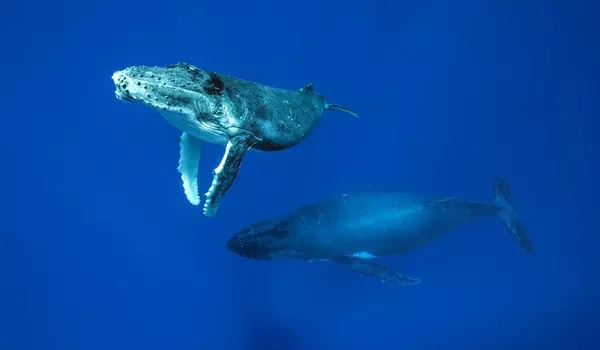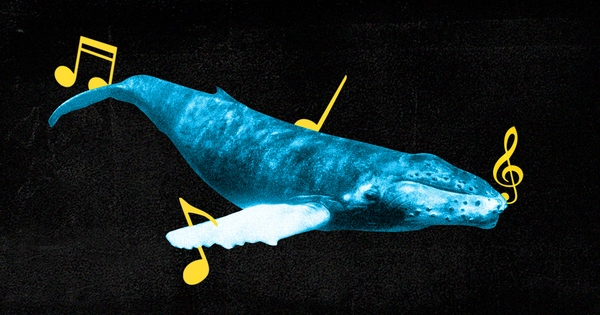Whale song is the sound that whales make to communicate. The term “song” refers to the pattern of regular and predictable sounds made by some whale species (most notably the humpback) in a manner similar to human singing. A study led by the University of Queensland discovered that humpback whales can learn incredibly complex songs from whales from other regions.
Researchers discovered that New Caledonian humpback whales could learn songs from their counterparts on Australia’s east coast with remarkable accuracy, according to Dr. Jenny Allen, whose doctoral work at UQ’s School of Veterinary Science led to the study.
“This really indicates a level of’cultural transmission’ that exceeds any observed non-human species,” Dr. Allen said. The researchers examined the song patterns of male humpback whales from each region between 2009 and 2015 to see how culture spreads between populations.
Dr. Allen stated that the complexity of the songs was determined by counting the number of sounds made by the whales as well as the length of the sound patterns. “We were able to see if the songs changed in any way when sung by the New Caledonian whales by listening to the Australian humpback population,” Dr. Allen explained.
We now have a more complete picture of different humpback whale populations’ behaviors, movements, and interactions, including how they transmit culture. It means we’re better prepared to protect them from the numerous threats they face as our climate and planet change.
Dr. Jenny Allen
“We discovered that they learned the exact sounds without any simplifying or leaving anything out. And each year that we observed them, they sang a different song, implying that humpback whales can quickly learn an entire song pattern from another population, even if it is complex or difficult.”
The mechanisms used to generate sound differ between cetacean families. Marine mammals, such as whales, dolphins, and porpoises, rely on sound for communication and sensation far more than land mammals (excluding humans), because other senses are ineffective in water. Because of the way water absorbs light, marine mammals have limited vision. Smell is also limited because molecules in water diffuse more slowly than in air, making smelling less effective.
Furthermore, the speed of sound in water is roughly four times that of the speed of sound in the atmosphere at sea level. Because sea mammals rely on hearing to communicate and feed, environmentalists and cetologists are concerned that increased ambient noise in the world’s oceans caused by ships and marine seismic surveys is harming them. The findings support the theory that whales learn songs on shared migration routes such as New Zealand or shared feeding grounds such as Antarctica.

“It’s unusual to see this level of cultural exchange documented on such a large scale in a non-human species,” Dr. Allen said. “We hope that these findings will serve as a model for future research into the evolution of cultural communication in animals and humans.”
While humpback whales have recently been removed from the endangered species list, Dr. Allen believes that their populations must still be carefully managed, and that these findings may help. “It is well known that having a thorough understanding of a species improves the efficacy of conservation and management methods,” Dr. Allen said.
“We now have a more complete picture of different humpback whale populations’ behaviors, movements, and interactions, including how they transmit culture. It means we’re better prepared to protect them from the numerous threats they face as our climate and planet change.”
While the complex and haunting sounds of the Humpback Whale (and some Blue Whales) are thought to be primarily used in sexual selection, other whales’ simpler sounds are used all year. While toothed dolphins (including the Orca) can use echolocation (the emission of ultrasonic beams of sound waves) to detect the size and nature of objects very precisely, baleen whales do not.
Furthermore, unlike some fish, such as sharks, whales have a limited sense of smell. Given the poor visibility of aquatic environments and the fact that sound travels so well in water, human-audible sounds aid in the navigation of such whales. For instance, the depth of water or the existence of a large obstruction ahead may be detected by loud noises made by baleen whales.
The research is a collaboration with Opération Cétacés from New Caledonia and has been published in Scientific Reports.
















